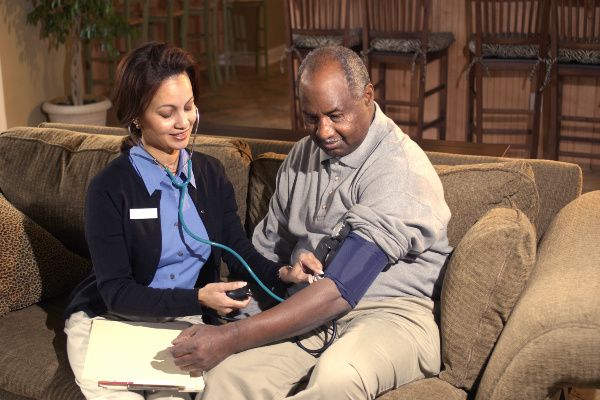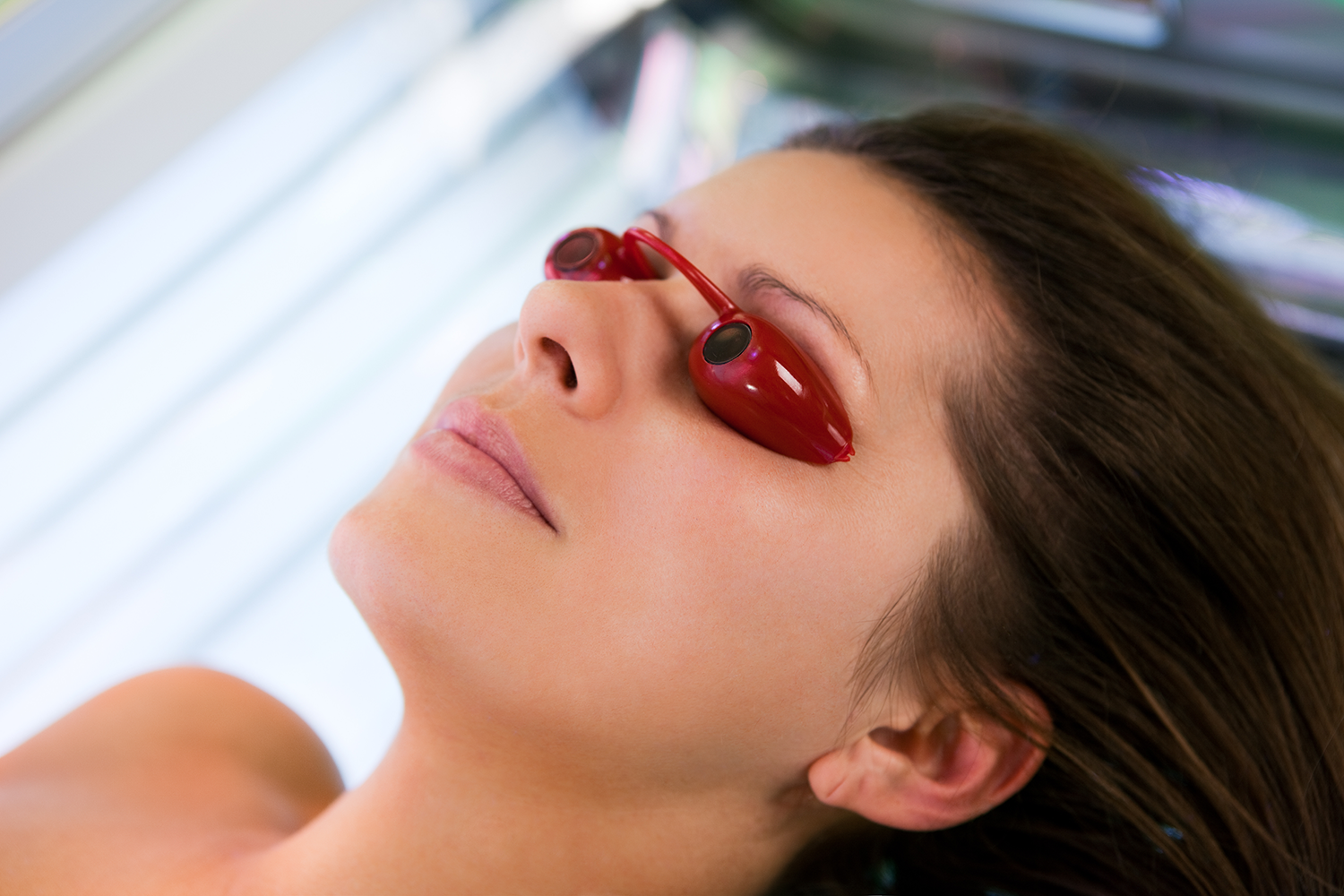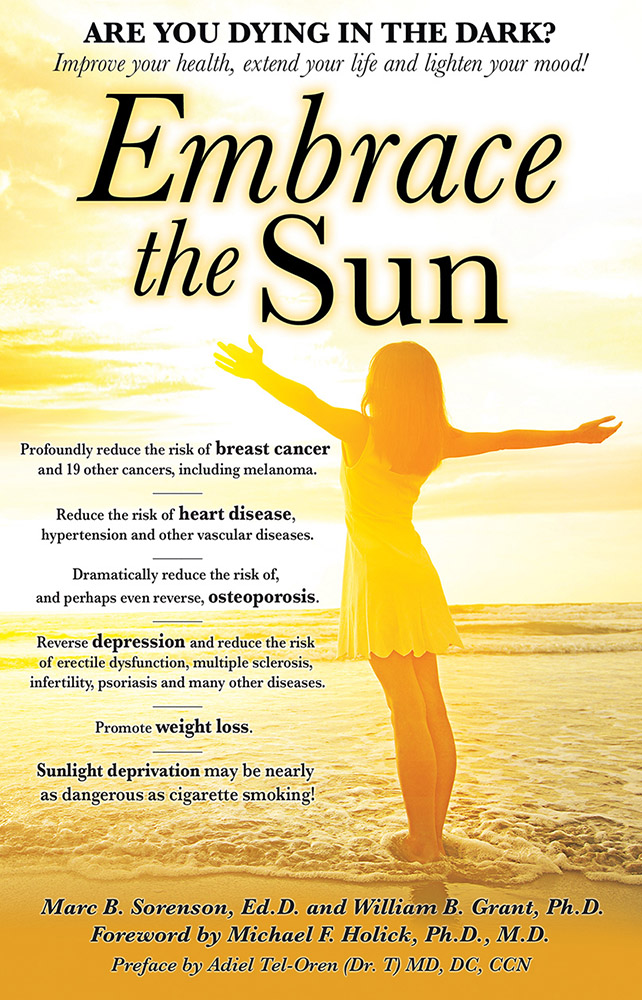Insufficient sunlight associates in a dose-response manner to higher risk of hypertension and earlier death. By Marc Sorenson, EdD. 
Understanding hypertension
Hypertension, or chronic high blood pressure, depends on the amount of blood the heart pumps and resistance to arterial blood. Thus, the tighter the arteries, the higher the blood pressure. The top number on a blood-pressure measurement, and stated in millimeters of mercury (mm/Hg), is systolic pressure. In addition, the lower number is diastolic pressure, another critically important measurement. Hypertension occurs when blood pressure is greater than 140/90 mm/Hg. Thirty-one percent of US adults are hypertensive. Hypertension can damage arterial walls and can eventually lead to an increased risk of death from heart disease, heart failure, and other arterial diseases. It also associates to a higher risk of kidney disease, irregular heart rhythms, osteoporosis, cognitive dysfunction, painful intercourse and stroke.
Does insufficient sunlight exposure influence hypertension?
Conventional textbook theory holds that the brain, blood vessels, and kidney regulate blood pressure. However, recent evidence suggests that the skin could also regulate hypertension, and insufficient sunlight plays a role in increasing it.
Insufficient sunlight, as mentioned, leads to a spate of diseases and disorders. In addition, some of those diseases have a dose-response relationship with sun exposure.
Hypertension is one of those diseases and can lead to disability and death. Blood pressure between 80 (diastolic pressure or lowest pressure) and 120 systolic (higher pressure), is in normal ranges. When blood pressure rises substantially above either of these figures and stays elevated, it is a danger signal.
Understanding the dose-response relationship.
So, what is a dose-response relationship (DRR)? This is where changes in one measured factor produces a predictable, consistent change in another measured factor. Thus, if I increase my exercise a certain amount weekly, I probably hope for a dose-response outcome: predictably better endurance. Consequently, if my body increases its endurance each week, my exercise produces a dose response relationship with endurance. Conversely, if someone stops exercising and loses a predictable amount of endurance, this is also a DRR (negative DRR).
An illustrative example of positive sunlight (rather than insufficient sunlight) and DRR.
My friend Wayne had severe hypertension when checking in at our former resort. After sunbathing each day for a month, hypertension decreased profoundly.
Wayne arrived with blood pressure of 157 systolic and 97 diastolic (157/97). Both of these measurements are dangerously high. Four weeks later, without medication, and while taking no vitamin D, the numbers dropped to 125/54. He had progressed from very high stroke risk to very low stroke risk. In addition, his vitamin D levels climbed to 103 ng/ml, a number I considered impossible without supplementation. I learned much, especially about sunlight, vitamin D levels and hypertension. Sufficient sunlight is a key to optimal levels of blood pressure. Many people believe that older persons cannot raise vitamin D levels. Yet, Wayne was in his seventies. Furthermore, insufficient sunlight was obviously a major cause of his hypertension. Wayne’s DRR occurred with the increased sun exposure and produced optimal blood pressure.
The latest research regarding insufficient sun exposure and hypertension
This latest research on insufficient sun exposure began by noting another important, but misleading fact. An inverse association exists between cardiovascular disease (CVD) and vitamin D levels. Yet, as the authors mentioned, trials of vitamin D supplementation seem to show no benefits for CVD. In addition, they state that benefits of high vitamin D levels for CVD might be a marker for something else. That something, of course, is probably sunlight. In their research, carried out by questionnaire, 23,593 women answered questions regarding melanoma. In addition, they also related factors of possible interest for hypertension. Those factors included detailed sun exposure habits, marital status, education, smoking, alcohol, BMI, exercise and chronic stress. Hypertension-medication use from 2005-2007 became the measurement tool used to determine hypertension incidence among members of the study group.
All subjects filled out a questionnaire to determine sun-exposure and sun-bed habits:
- Do you sunbathe during summer?
- Do you sunbathe during winter vacation?
- Do you travel south to sunbathe?
- Do you use a sun bed?
The investigators deemed that women answering ‘yes’ on one or two questions had moderate sun exposure. Those answering ‘yes’ on three or four questions had the greatest sun exposure.”
The main goal was to assess hypertension risk associated with sun exposure, after adjusting the data for any confounding factors.
Here are the results:
- When compared with women with high sun exposure, those with low sun exposure were 41% were more likely to have hypertension. For moderate sun exposure, the women were 15% more likely to have hypertension. Hence, this is another example of a dose response relationship (DRR). The lower the sunlight exposure, the greater the risk of hypertension.
- Other risk factors for hypertension were lack of exercise, darker skin, chronic high stress and lack of university education.
- The researchers concluded, “That in our observational design sun exposure was associated with a dose-dependent reduced risk of hypertension…. [This] might partly explain the fewer deaths of [from] cardiovascular disease with increasing sun exposure.”
Hypertension is serious, and a major cause of death, which is inversely associated to sun exposure. Therefore, regular, non-burning sun exposure can provide one of the best protections against this insidious disease.
For more information on sunlight and health: https://sunlightinstitute.org/ and read the book, Embrace the Sun.
By Marc Sorenson, EdD Sunlight Institute
High blood pressure (HBP, hypertension) is a plague in our society, with one in three adults in the U.S. having the condition.[1] Although 61,762 people per year die from HBP per se, its influence on other diseases may be more dangerous that HBP itself; it is also implicated in increased risk of death from heart disease, heart failure, other arterial diseases, kidney disease, irregular heart rhythms, osteoporosis, cognitive dysfunction, painful intercourse and stroke.[2] Although textbook theory holds that HBP is regulated by the brain, blood vessels, or kidney, recent evidence suggests that HBP could be regulated in the skin, and that sunlight exposure plays a role in in controlling the condition.[3] The authors of the latest research on this subject (footnote 3) demonstrate that sunlight produces a dilation of the arteries (known as vasodilation) by stimulating the production of Nitric oxide (NO) in the skin. NO is a potent vasodilator, stimulated by the ultraviolet A (UVA) portion of sunlight, and has been known for several years to lower blood pressure. Dr. Oplander and his colleagues wrote the first paper on the UVA and blood pressure in 2009, [4] showing a dramatic reduction of blood pressure with UVA.
A study from China demonstrates that exposure to sunlight correlates to a lowered risk of HBP.[5] In a randomly selected population of Chinese residents from Macau (where the rate of hypertension is very high), the following risk factors for hypertension were assessed: lack of sunlight exposure, low intake of fish, smoking, obesity and lack of exercise. An average of more than one-half hour of sunlight exposure per day, compared to none, predicted a 40% reduced risk for hypertension. Other factors such as smoking and poor nutrition, are of course very dangerous in producing HBP.
Dr. Grant has estimated that by doubling the dose of sun exposure, 400,000 lives could be saved yearly in the USA, with most of the reduction in mortality due to lives saved by lesser incidence of cancer and cardiovascular disease.[6] HBP, of course is a major player in cardiovascular disease, and we know that regular sunlight exposure is associated with profoundly lower risk of about 18 major cancers. Do not neglect to get your regular, non-burning sun exposure. It could save your life!
[1] American Heart Association/American Stroke Association Statistical Fact Sheet/2013 update.
[2] Ann Pietrangelo. Healthline 2014 http://www.healthline.com/health/high-blood-pressure-hypertension/effect-on-body (accessed January 4, 2016).
[3] Johnson RS, Titze J, Weller R. Cutaneous control of blood pressure. Curr Opin Nephrol Hypertens. 2016;Jan25(1):11-5.
[4] Opländer C, Volkmar CM, Paunel-Görgülü A, van Faassen EE, Heiss C, Kelm M, Halmer D, Mürtz M, Pallua N, Suschek CV.. Whole body UVA irradiation lowers systemic blood pressure by release of nitric oxide from intracutaneous photolabile nitric oxide derivates. Circ Res. 2009;105:1031–40.
[5] Ke L, Ho J, Feng J, Mpofu E, Dibley MJ, Feng X, Van F, Leong S, Lau W, Lueng P, Kowk C, Li Y, Mason RS, Brock KE. Modifiable risk factors including sunlight exposure and fish consumption are associated with risk of hypertension in a large representative population from Macau. J Steroid Biochem Mol Biol 2013 Nov 1 [Epub ahead of print].
[6] Grant, W. In defense of the sun: An estimate of changes in mortality rates in the United States if mean serum 25-hydroxyvitamin D levels were raised to 45 ng/mL by solar ultraviolet-B irradiance. Dermato-endocrinology 2009;4:207-214.



